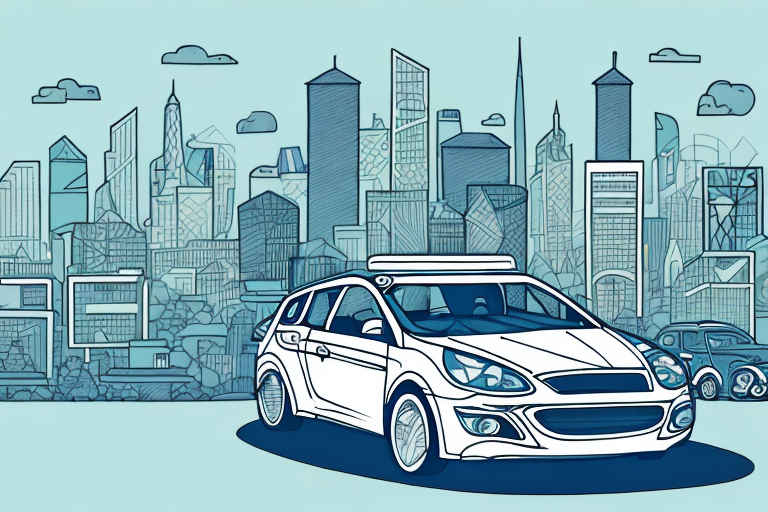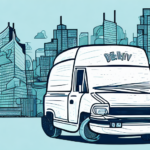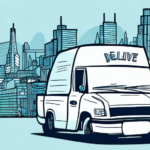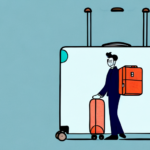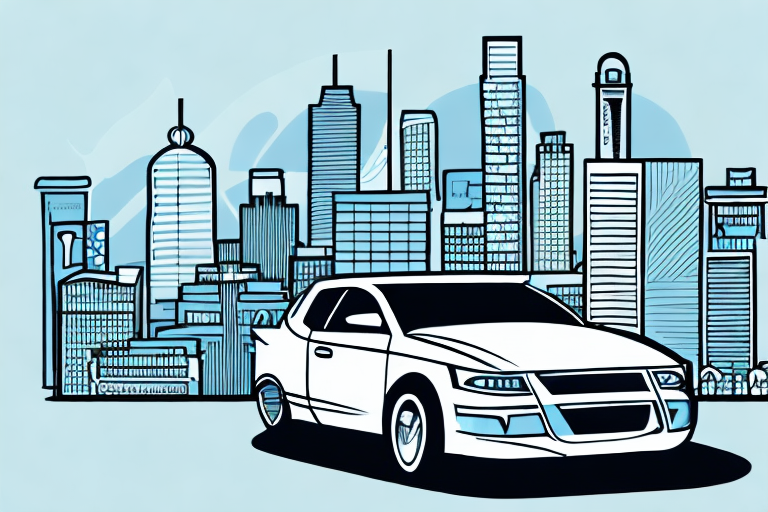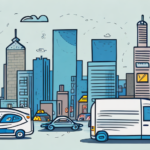Discover the Benefits of Post and Courier Delivery Jobs
Are you seeking a career that offers flexibility, the opportunity to be constantly on the move, and the satisfaction of delivering essential items to people who rely on them? Working in post and courier delivery might be the perfect fit for you. In this article, we delve into the world of post and courier delivery jobs, exploring their history, differences between public and private services, benefits, challenges, and salary expectations for professional delivery drivers.
Understanding Post and Courier Delivery Jobs
Post and courier delivery jobs involve transporting letters and parcels from one location to another. Postal services refer to the delivery of mail via national postal organizations such as the United States Postal Service, Royal Mail, or Japan Post. Courier delivery encompasses private companies like FedEx, UPS, and DHL, as well as online platforms such as Amazon and Uber that offer delivery services for goods purchased through their platforms.
With the rapid rise of e-commerce, the demand for reliable delivery services has surged. According to Statista, the global courier, express, and parcel market is projected to reach $516 billion by 2025. This growth is fueled by the increasing popularity of online shopping and the necessity for swift and dependable delivery solutions, offering numerous opportunities for flexible work arrangements, from part-time positions to full-time roles with benefits.
History of Post and Courier Delivery Jobs
The origins of postal delivery trace back to ancient Rome, where government-employed messengers delivered crucial documents across the empire. By the 19th century, postal services had expanded across Europe and North America, introducing postage stamps and standardized addresses. The 20th century saw the emergence of private courier companies initially focused on freight transport for businesses, later expanding into residential deliveries for individual customers.
The advent of online marketplaces has revolutionized the delivery sector, enabling consumers to order goods online and receive them within hours or days. Innovations such as drones and autonomous vehicles are being explored to enhance delivery speed and efficiency, creating new job opportunities in the tech and logistics industries.
However, the industry also faces challenges, including the pressure to reduce carbon emissions and the prevalence of package theft. Solutions like bike couriers, locker systems, and enhanced security measures such as package tracking and signature confirmations are being implemented to address these issues.
Benefits of a Career in Post and Courier Delivery
Embarking on a career in post and courier delivery offers numerous advantages:
- Flexibility: Many delivery jobs offer flexible schedules, accommodating part-time or full-time work based on individual needs.
- Independence: Delivery drivers often work independently, providing autonomy and the chance to manage their own routes.
- Job Opportunities: The booming e-commerce sector ensures a steady demand for delivery services, leading to abundant job openings.
- No Degree Required: Most delivery positions do not require a college degree, making them accessible for individuals seeking practical, hands-on work.
Perks of Being a Delivery Driver
Delivery drivers enjoy unique perks such as:
- Working outdoors and traveling to different parts of the city or country.
- Meeting new people daily.
- Access to employee discounts on various products and services.
- The satisfaction of providing a vital service to the community.
Differences Between Postal Services and Private Couriers
While both public postal services and private courier companies handle deliveries, key differences exist:
Public Postal Services
- Often government-owned with a universal service obligation to deliver mail to every address within a country or region.
- Generally provide standard delivery times and may have limited options for express services.
- Offer stable salaries and benefits like health insurance and retirement plans.
Private Courier Companies
- Profit-driven organizations offering specialized or premium services, such as overnight deliveries or secure handling of high-value items.
- Provide higher salaries, performance-based bonuses, and more autonomy in route management.
- May offer more varied work environments and opportunities for advancement within the company.
How to Land and Succeed in the Delivery Industry
Landing a Job
To increase your chances of securing a delivery job:
- Obtain a Clean Driving Record: Ensure you have a valid driver’s license with a clean driving history.
- Prepare Your Resume: Highlight relevant skills such as customer service, attention to detail, and time management.
- Search for Job Listings: Look for opportunities on company websites, job portals like Indeed, and through local job fairs.
- Complete Required Screenings: Be prepared for background checks, drug screenings, and physical exams as per employer requirements.
Succeeding in Your Role
Once employed, thrive in your position by:
- Being Punctual and Reliable: Timeliness is crucial as customers and employers depend on prompt deliveries.
- Practicing Safe Driving: Adhere to traffic laws, avoid distractions, and stay mindful of weather and road conditions.
- Providing Excellent Customer Service: Communicate effectively, handle queries professionally, and ensure positive customer interactions.
- Optimizing Efficiency: Plan routes effectively, manage time well, and proactively address any delivery issues.
Training and Qualifications
Requirements for delivery jobs typically include:
- A valid driver’s license with a clean driving record.
- A high school diploma or equivalent, depending on the employer.
- Additional certifications may be beneficial, such as defensive driving courses or first aid training.
- On-the-job training provided by employers covering company policies, safety guidelines, and delivery procedures.
The Future of Post and Courier Delivery Jobs
The delivery industry is rapidly evolving, influenced by technological advancements and changing consumer behaviors:
Technological Advancements
- Automation: The integration of drones and autonomous vehicles is set to revolutionize delivery speed and efficiency.
- Smart Logistics Systems: Enhanced tracking and data optimization improve route planning and reduce transportation costs.
- Mobile Applications: Apps facilitate real-time communication, package tracking, and streamlined delivery operations.
Growth of E-commerce
As e-commerce continues to expand, so does the demand for delivery services. Industries will increasingly rely on efficient delivery networks to meet customer expectations for fast and reliable shipping.
Despite technological changes, human delivery drivers remain indispensable for navigating complex environments, handling customer interactions, and addressing unforeseen delivery challenges.
Salary Expectations and Career Outlook
Salaries for post and courier delivery drivers vary based on factors such as employer, location, and experience. According to the Bureau of Labor Statistics, as of May 2023, the median annual wage for postal service workers was approximately $61,000, with private courier services offering a median annual wage of around $42,000.
In addition to base pay, many employers provide bonuses, overtime opportunities, and other incentives to reward exceptional performance and handle peak delivery periods like holidays.
Common Challenges in Delivery Jobs
Working in post and courier delivery comes with its own set of challenges:
- Difficult or Angry Customers: Handling dissatisfied customers requires patience and strong communication skills.
- Unpredictable Conditions: Adverse weather and traffic can complicate deliveries and impact delivery times.
- Package Handling: Managing heavy or bulky packages can lead to physical strain and potential injury.
- Security Concerns: Risks of package theft or damage necessitate vigilance and adherence to security protocols.
A Day in the Life of a Delivery Driver
A typical day for a post or courier delivery driver involves:
- Loading Packages: Preparing the delivery vehicle by loading parcels and organizing them for efficient access.
- Route Planning: Mapping out the most efficient delivery routes to maximize productivity and minimize delays.
- Delivering and Collecting: Visiting various addresses to drop off or pick up packages, often requiring signatures and scanning barcodes.
- Customer Interaction: Addressing customer inquiries, resolving delivery issues, and providing excellent service.
- Data Entry: Updating delivery logs, tracking systems, and handling any necessary paperwork.
Conclusion
Choosing a career in post and courier delivery offers numerous benefits, including flexibility, job security, and the satisfaction of providing a vital service. With the continued growth of e-commerce and technological innovations shaping the future of the industry, delivery jobs present exciting opportunities for those who enjoy working independently and thrive in dynamic environments. Despite the challenges, dedicated and skilled delivery drivers remain the backbone of the delivery sector, ensuring packages reach their destinations safely and efficiently.













